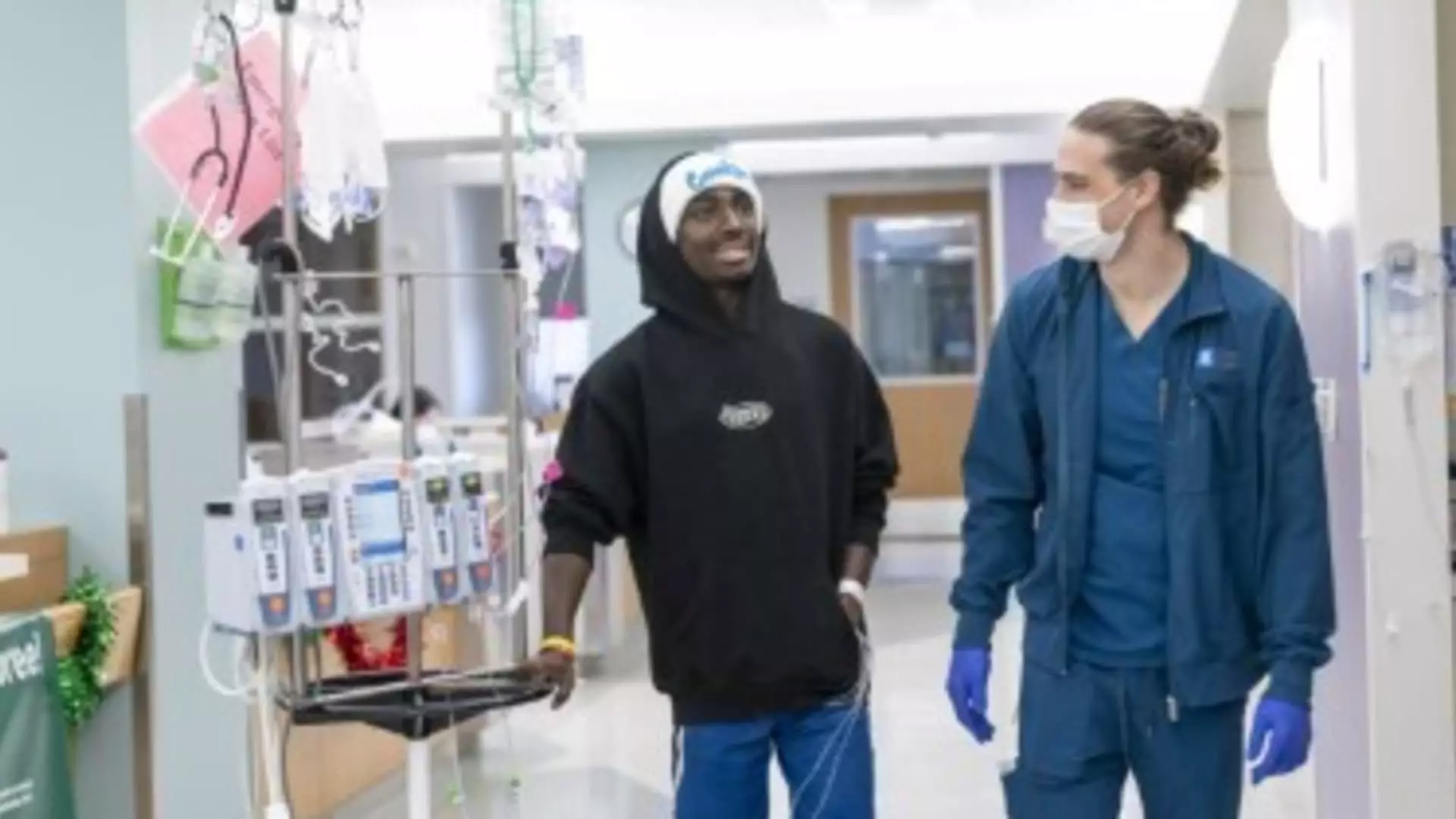Deshawn “DJ” Chow’s story is a poignant reflection of the challenges faced by those living with sickle cell disease (SCD). This genetic blood disorder, which predominantly affects Black individuals, can lead to debilitating pain episodes and a series of hospitalizations. DJ’s experience is emblematic of the realities many patients endure, often having to forgo school and other normal adolescent activities due to the pain and healthcare needs. The physical anguish manifests not just as pain but also as a barrier to experiences that many take for granted, such as participating in sports or social events with friends.
The initiation of a treatment regimen, especially one involving groundbreaking gene therapies, can offer a glimmer of hope for patients like DJ. His journey to the City of Hope Children’s Cancer Center was not just a pursuit of treatment; it was also a search for a semblance of a normal life that had seemed so elusive.
The introduction of Casgevy, a novel gene therapy developed by Vertex Pharmaceuticals, presents a revolutionary step in SCD treatment. Costing over $2 million per patient, the therapy encompasses comprehensive treatment plans including multiple hospital visits and chemotherapy. Although the price tag is astronomical, the potential for an improved quality of life is invaluable. DJ’s story of successful treatment and subsequent hope for normalcy exemplifies the profound impact this therapy could have on the lives of SCD patients, sparking dreams that had previously seemed unattainable, such as learning to snowboard or surf.
However, despite the excitement surrounding these innovative therapies, it is crucial to recognize the significant disparity in accessibility. With over 100,000 American patients affected, only a fraction have entered treatment due to various systemic obstacles. As described by both Vertex and Bluebird Bio’s executives, the slow ramp-up of treatment availability raises questions about future accessibility for patients who may benefit from these therapies before the damage from the disease becomes irreversible.
Navigating the complex landscape of health insurance coverage for gene therapies has proven formidable. Institutions like Children’s National Hospital and the City of Hope have had to develop new strategies for working with insurance companies to facilitate access for their patients. The intricacies of billing and coding for such costly treatments require hospitals to be proactive in advocating for their patients’ coverage.
Despite some initial challenges, the landscape is gradually becoming more navigable. Experts in the field, like officials from City of Hope, are focusing on streamlining coverage and learning from early experiences to enhance future accessibility for treatments. Insurers are wrestling with the economic ramifications of covering such expensive therapies, and innovative payment models are being explored to distribute the financial burden more equitably across systems.
For state Medicaid programs, these concerns are magnified further. Almost half of the patients suffering from SCD rely on Medicaid, particularly in southern states that house a large percentage of these individuals. With proposed federal support aimed at alleviating some of the financial strain for states, potential funding could help offset costs. However, as outlined by researchers, even with federal assistance, the implications of the therapy costs could significantly impact state budgets.
The hope that gene therapies like Casgevy could afford patients a brighter future is palpable, resonating deeply with families like DJ’s. Parents like Sean Chow express profound gratitude for the medical advancements that could alleviate their child’s suffering, even while recognizing the economic and logistical challenges that lie ahead for many others still yearning for access to effective treatments.
As the landscape of healthcare continues to evolve, it is crucial for policymakers, healthcare providers, and pharmaceutical companies to collaborate in creating equitable solutions that ensure patients can access these transformative therapies without prohibitive financial barriers. The future of gene therapy holds astonishing potential, yet it is imperative to address the existing disparities in treatment accessibility.
DJ Chow’s journey is a testament to the resilience of individuals grappling with chronic illness and to the wider societal responsibility to ensure that breakthroughs in medicine translate into real-world benefits for those in need. With ongoing dialogue and commitment from all stakeholders involved, the dream of a normal, pain-free life for patients suffering from sickle cell disease may become a reality, transforming not just individual lives, but entire families and communities.

